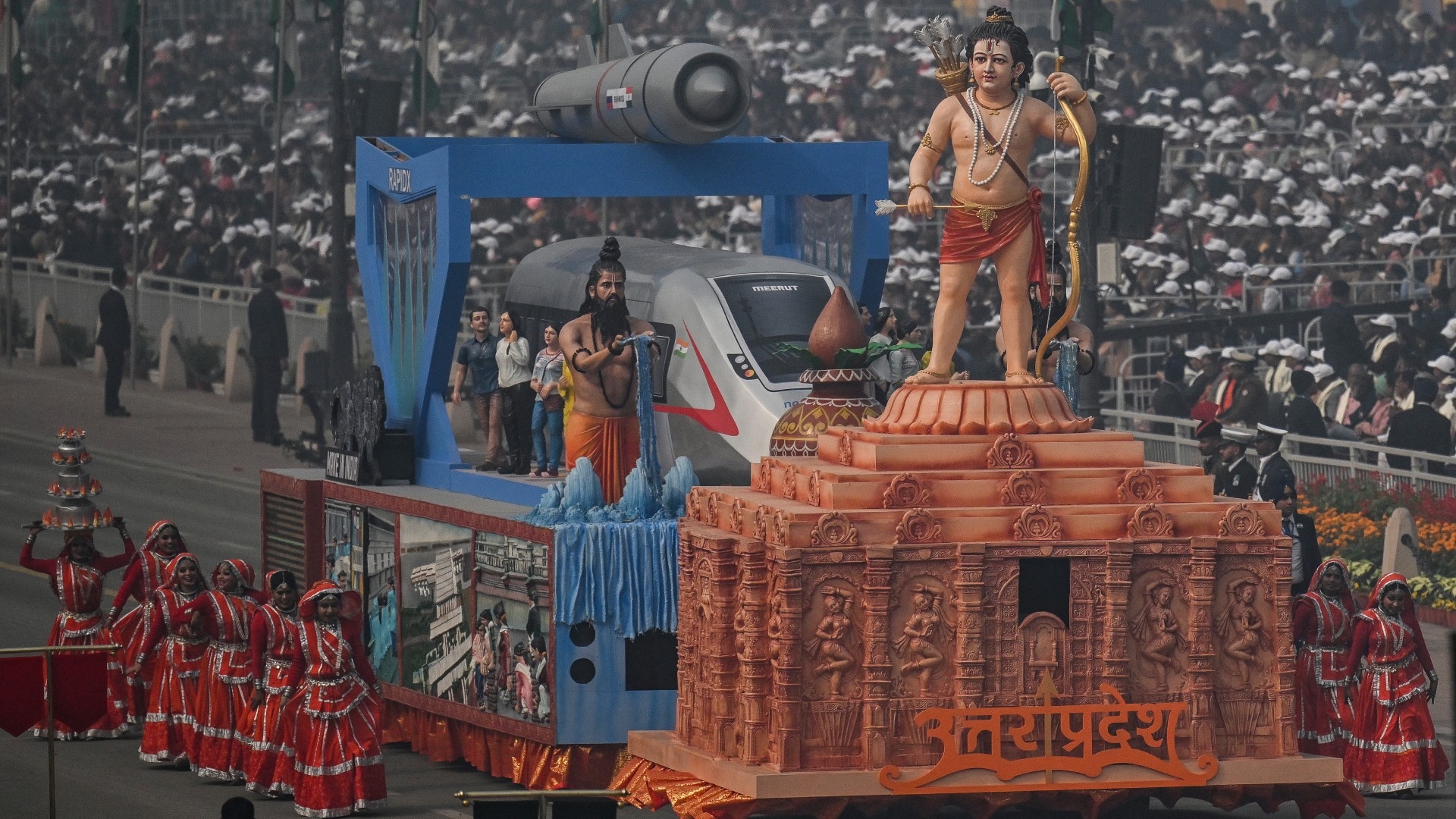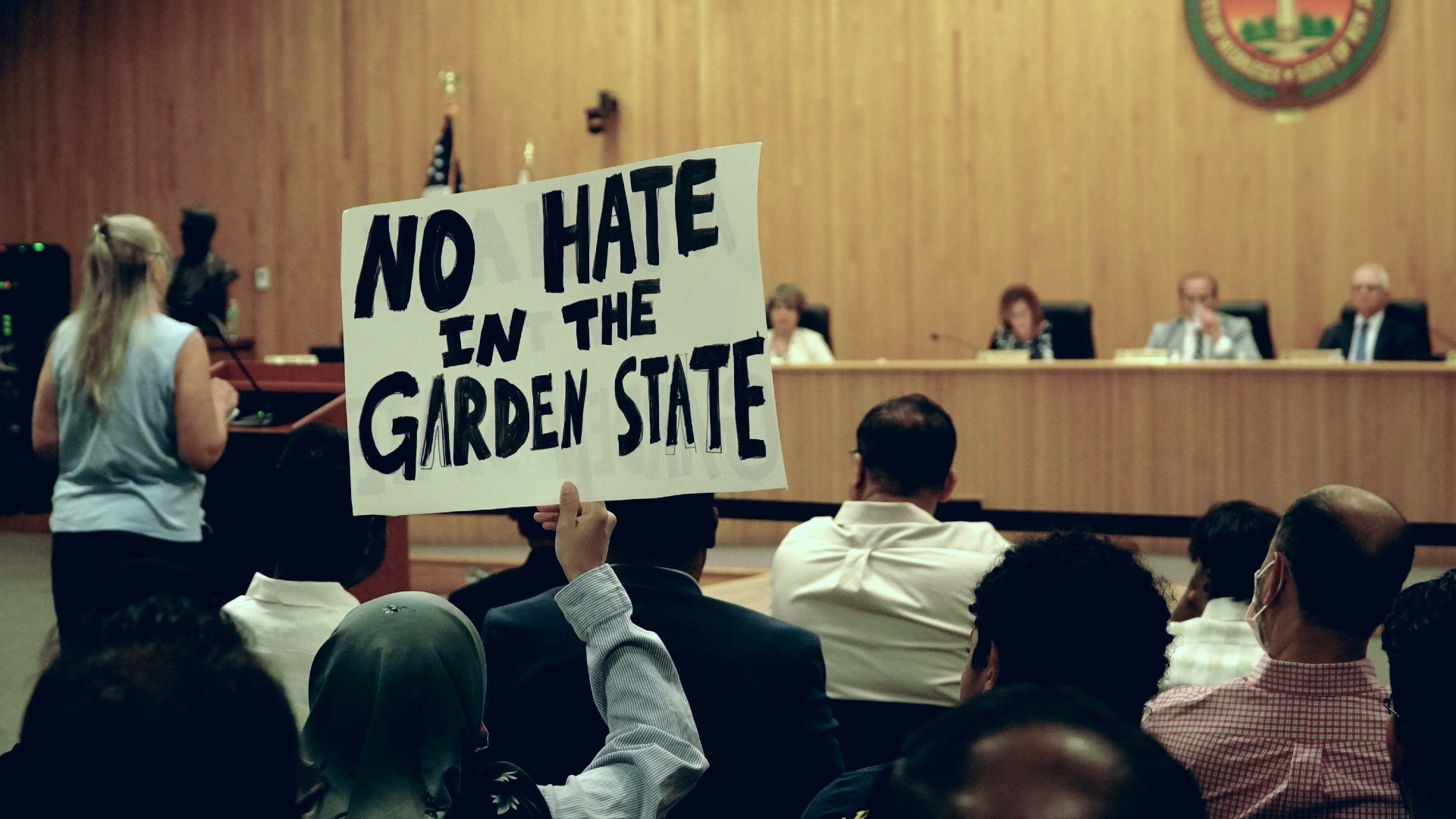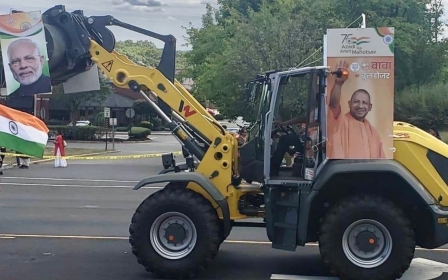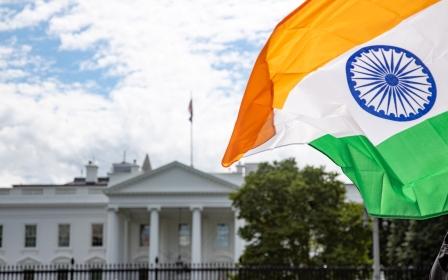Rights groups slam inclusion of Ayodhya temple float in New York India parade

The inclusion of a float depicting a replica of the Ram Temple at next week's India Day Parade in New York City would be tantamount to celebrating violence against Muslims and other minorities in India, human rights activists and scholars have said.
The partially completed Ram Temple, a sprawling new temple complex being built over the destroyed 16th-century Babri Mosque in the north Indian city of Ayodhya, was inaugurated earlier this year as a means to further consolidate Prime Minister Narendra Modi's image among his base and revive what they consider India's heritage as a homeland of Hindus, say activists.
"[The temple] is widely understood as a monument to Hindu supremacist ideology, one that highlights Modi’s goal of creating a Hindu ethno-state, and reinvigorates the Indian right’s goal of taking over and destroying mosques across the country," Mohammed Jawad, president of the Indian American Muslim Council (IAMC), told Middle East Eye.
"It is an anti-Muslim symbol, and those who celebrated the Ram Temple’s consecration are very much aware of this ... we can’t allow this to slide in a city like New York, where diversity is cause for celebration and communities of all backgrounds coexist," Jawad added.
New MEE newsletter: Jerusalem Dispatch
Sign up to get the latest insights and analysis on Israel-Palestine, alongside Turkey Unpacked and other MEE newsletters
Earlier this week, several organisations like Hindus for Human Rights (HfHr) and others like the Council on American Islamic Relations (Cair) and New York State Council of Churches, as well as Genocide Watch, wrote a letter to both New York Governor Kathy Holchul as well as New York City's Mayor Eric Adams in which they described the inclusion of the float as posing "a grave threat to the values of inclusivity and tolerance that New Y0rk City and the state of New York proudly uphold".
"We implore you to take immediate and decisive measures to prevent inclusion of a polarizing and divisive float in this parade," the letter added.
In response to several questions from MEE, a spokesperson for city hall would not clarify if the mayor would be taking any action over the complaint.
"From day one, Mayor Adams has been clear that celebrations in our city should be welcoming and inclusive," the spokesperson for city hall said.
"Ethnic parades allow communities to honour the roots of their ancestors as well as celebrate their cultures that make up New York City’s rich melting pot ... the emphasis of the mayor has always been community first, to respect and honour the grace that entails and come together as one - setting politics aside," the spokesperson added.
MEE understands the mayor did not receive an invitation to attend the parade.
'Symbol of new India'
The India Day Parade, an annual event in NYC since 1981, organised by the Federation of Indian Associations (FIA), celebrates India's Independence Day.
The parade typically sees thousands of Indian Americans attending to mark the occasion.
They are seen waving Indian flags and enjoying Indian cuisine and sweets, as several floats roll their way from East 38th Street, down Madison Avenue to their final point on 28th Street.
Last month, The Diaspora newsletter, published by FIA, announced the inclusion of a replica of the Ram Temple in this year's parade, setting off consternation among activists in the city.
The newsletter beamed the event was a result of a collaborative effort between the Indian consulate in NYC, the Vishwa Hindu Parishad America (VHPA) - considered the US-based branch of the far-right Hindu RSS group in India - as well as other groups.
"The India Day parade is well known for featuring colourful floats representing the diverse Indian-American communities and their cultural expressions," the FIA said in its newsletter on 10 July.
"This year, the inclusion of the grand replica of the newly inaugurated Ayodhya Ram Mandir, measuring 18 feet long, nine feet wide, and eight feet tall, promises to be a powerful symbol of cultural significance and a testament to a historic moment for the global Indian community," it added.
Neither the VHPA nor the organisers of the float responded to MEE's request for comment.
But rights activists and scholars say a parade meant to celebrate India's independence and cultural diversity has been hijacked by the Hindu right to specifically emphasise India as a Hindu state, as evidenced by the inclusion of the symbol of the Ram Temple.
For decades, many Hindus have claimed that the medieval-era Babri Masjid was built on top of what they describe as the birthplace of the deity Lord Ram, leading to several clashes between Hindus and Muslims.
In the 1980s, the Ram Janmabhoomi movement advocated for the temple to be rebuilt, which paved the way for 6 December 1992, when police stood aside as Hindu right-wing mobs encircled the mosque before tearing it down.
It led to a series of riots in the country, resulting in thousands of people, mostly Muslims, being killed.
The destruction of the Babri Masjid is considered a turning point in Indian political history.
After a prolonged court battle, India’s Supreme Court in 2019 ruled the demolition of the Babri Mosque in 1992 an illegal act but nonetheless awarded the disputed land to Hindus and a trust for the construction of the Ram Temple.
The ongoing construction of the temple and its highly publicised consecration earlier this year, activists and scholars say, has emboldened right-wing Hindus to use the example of the temple to destroy other mosques around the country as well as accuse Muslims of being outsiders to the nation.
Dheepa Sundaram, an assistant professor in Hindu Studies, Critical Theory and Digital Religion at Denver University told MEE the introduction of the Ram Temple to the parade was a way to "implant the idea of India as a Hindu nation".
"I also see this as an attempt to do the work that Modi’s campaign failed to do, which is attempt to launch a 'new India' which is a 'Hindu Rashtra' which has at its foundation the Ram Temple.
"In this sense, the float invokes an India that is for Hindus alone and caste-privileged Hindus at that. The Hindu Right's Rama is a masculinised figure that is primarily envisioned as a dharmic warrior," the academic added.
Sundaram said it appeared the Indian American community was "largely happy" to see symbols like these included in such events because they have accepted the narrative that the Ram temple is a symbol of unity and Indian greatness.
"The memory and pain of the razing of Babri is muted in the diaspora and the desire for an India that is a power player in the world is strong, even among those who oppose Modi. The Ram temple is seen as a symbol of this new India, a powerful India that can go toe to toe with the West, a modern Hindu Rashtra.
Precedent
Jawad, from IAMC, says a public celebration of the temple in NYC would normalise the violence being inflicted on hundreds of millions of people belonging to the caste-oppressed and other religions in India. He described the parade as using "the veneer of Indian pride to disguise what is essentially a celebration of destruction of the Muslim heritage."
Activists say it wouldn't be the first time that organisers of India Day parades have sought to promote symbols of hate at their events in the US.
In 2022, organisers of the India Day in Edison, New Jersey, brought a bulldozer decorated with posters of Modi and Yogi Adityanath, the chief minister of India's most populous state, Uttar Pradesh.
The presence of the bulldozer drew outrage, given its place in modern Indian politics where the Indian state has repeatedly used bulldozers to demolish the homes of Muslim activists and dissidents.
Adityanath is popularly known by his moniker "Baba Bulldozer" (Father of the Bulldozer) for turning to the tactic routinely to discipline Muslims in his state.
In August 2022, video footage showed the bulldozer rolling down a main road in Edison, stopping outside Muslim restaurants and businesses, prompting outrage for months in the state.
The IAMC said the inclusion of the bulldozer had opened the door to other displays of anti-Muslim hate across the state.
"This included driving digital trucks displaying anti-Muslim messaging around a number of mosques in Piscataway and Middlesex; anti-Muslim hate speech on the constituents’ podium of a Teaneck City Council meeting; and other incidents that left local Muslims feeling shaken. We don’t want the same thing to happen in New York," Jawad from the IAMC said.
The developments come amidst increasing scrutiny over the expanding role of Hindu nationalists across the American political landscape.
"We know that the Hindu supremacist movement in the United States, represented by groups like the VHP-A, is increasingly converging with other segments of the American far right, and given the growing political activity and influence of Indian Americans, debates within this community have broader implications for American society," Hindus for Human Rights said in a statement.
Middle East Eye delivers independent and unrivalled coverage and analysis of the Middle East, North Africa and beyond. To learn more about republishing this content and the associated fees, please fill out this form. More about MEE can be found here.






